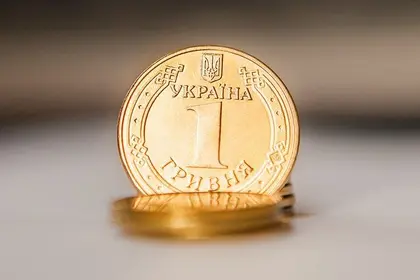Bonds: Investors prefer short-term bills for now
Last week, the largest amount of funds attracted to the budget was through sale of semi-annual bills. Securities maturing in 2023 amounted to only 14% of all funds raised at the auction. Investors concentrated demand on securities maturing in November of this year – almost Hr 9bn worth of bonds were sold. Other bills maturing in 2022 contributed Hr 0.5bn and almost EUR 52m. But the placement of instruments maturing in October next year fell to Hr 90m or 43 times lower compared with the previous auction. More details in the auction review.
JOIN US ON TELEGRAM
Follow our coverage of the war on the @Kyivpost_official.
According to the NBU, last week, non-banking institutions and individuals continued to increase their portfolios, foreigners are still not interested in new bills, and banks have reduced local-currency bonds portfolio by Hr 5.3bn.
ICU view: Due to the large amount of borrowings last week, the total monthly amount raised in May is already at a record high this year and may increase further after the auction on May 31. Although technically the funds will be included in budget financing in June, the monthly volume of borrowings in May became the largest during war-time. In particular, this was due to the large amount of redemptions at the beginning of the month and last week, as the total came to Hr 31bn. Yet, new borrowings in the local currency were still less than the amount of redemptions, so the total refinancing fell short of redemptions by Hr 4.8bn in May and Hr 22.3bn YTD.
Bonds: Eurobond prices see correction
Following earlier hefty increases, Eurobond prices corrected slightly last week, falling by 1-3 cents. The decline in prices was minimal, but played out over the week. Eurobonds maturing in 2026-28 lost about one cent per dollar, and bonds due in 2029-33 lost around 2 cents per dollar. The issue maturing this September remained steady at about 71 cents per dollar.
ICU view: Since the beginning of the full-scale Russian invasion, investors have been following events on the battle frontline, news of financial aid arriving to Ukraine, and statements by the Ministry of Finance about its intentions to service the sovereign debt. As the reality of the last three months shows, in the absence of positive news for several days in a row, Eurobonds are starting to decline in price. A stream of significant positive news is needed to maintain stable prices, even more so to keep them growing, but it was absent last week. The attention of investors will this week undoubtedly be focused on battles in the eastern and southern regions of Ukraine, as a possible temporary advance of the enemy may be another signal that the war may drag on for a long time. This will not add optimism for investors.
FX: NBU cancels some restrictions for cash FX market
From May 21, the National Bank of Ukraine allowed commercial banks to set exchange rates for retail operations without any reference to the official exchange rate. The NBU maintained the rule whereby banks can only sell FX cash that they earlier purchased from their clients. At the same time, banks were allowed to set any hryvnia exchange rate against hard currencies. Earlier, hard currencies could not be sold at rates that deviated from official rates by more than 10%. Since the ban was lifted, banks have maintained two exchange rates for retail operations. First, there is an exchange rate for cash exchange operations. Second, there is a rate at which the hryvnia is converted into FX via credit card operations. Now, these exchange rates differ by more than 10%. The purchase of non-cash hard currency is still prohibited.
Thus, before the decision of the NBU, the exchange rate of cash hryvnia to the U.S. dollar was around Hr 32/$ (official + 10%). Last week, it weakened to Hr 35.3-36.5/$. At the same time, rates for card transactions remain closer to the official rate than for cash, at just about Hr 30-32.8/$.
ICU view: The response of the banks to the NBU’s decision was quite measured. Banks weakened the hryvnia exchange rate primarily for the cash market, and it approached grey market rates. At the same time, for card transactions, mostly for Ukrainians who use cards abroad to pay for goods or services or to withdraw cash at ATMs, exchange rates are much more favorable. The ability of banks to sell hard currency in cash remains limited. At the same time, there are no such restrictions on card transactions. The online sale of hard currency to retail clients is prohibited. Therefore, these segments of the FX market remain mostly unconnected, so the difference between them currently remains significant.
RESEARCH TEAM
Vitaliy Vavryshchuk, Alexander Martynenko, Taras Kotovych
DOWNLOADS
Complete report (6 pages, 332KB)
You can also highlight the text and press Ctrl + Enter



